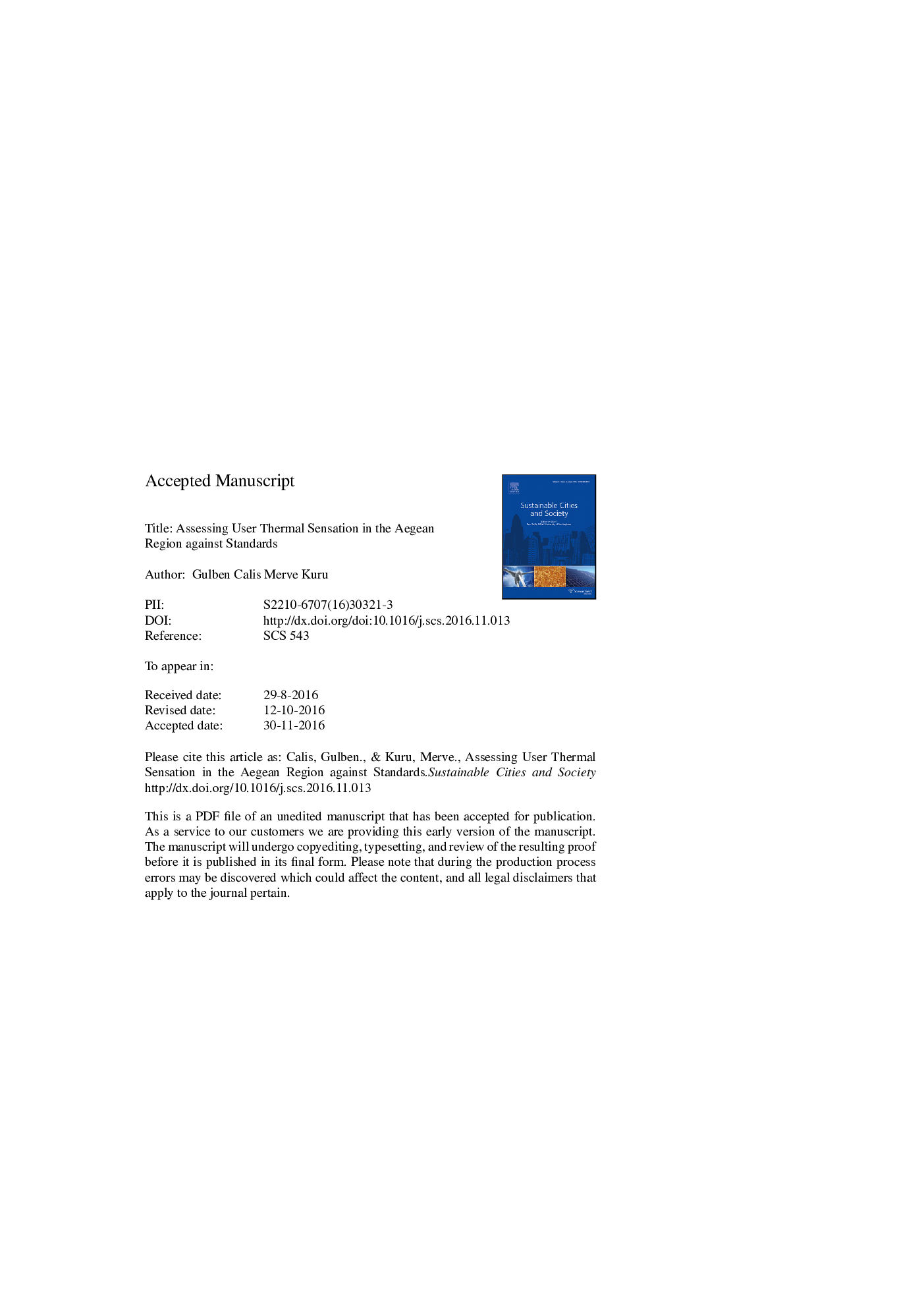| Article ID | Journal | Published Year | Pages | File Type |
|---|---|---|---|---|
| 4928254 | Sustainable Cities and Society | 2017 | 26 Pages |
Abstract
Thermal comfort is an important criterion in design, operation and commissioning of commercial and residential buildings. Today, building systems are operated according to the predefined set points, which are determined according to the standards that have predefined comfort ranges for all climatic zones. However, users' thermal sensation, preference and acceptability might vary for different climatic conditions, and, thus, operating buildings and predicting the comfort performance of buildings by measuring its adherence to the standards might not represent the perceived thermal sensation and satisfaction of users. This study aims at assessing the perceived thermal sensation of users in the Aegean region against the thermal comfort standards ASHRAE 55 and ISO 7730. Indoor environmental conditions were monitored and a survey study was carried out to obtain predicted mean vote (PMV) and actual mean vote (AMV), respectively. The results show that the PMV model underestimated the percentage of dissatisfied users in the environment and was not able to detect the thermal unacceptability in both seasons. Moreover, it was found that users prefer cooler environments both in the heating and cooling seasons. Therefore, lower temperatures compared to the standards should be maintained in order to ensure thermal comfort conditions.
Related Topics
Physical Sciences and Engineering
Energy
Renewable Energy, Sustainability and the Environment
Authors
Gulben Calis, Merve Kuru,
